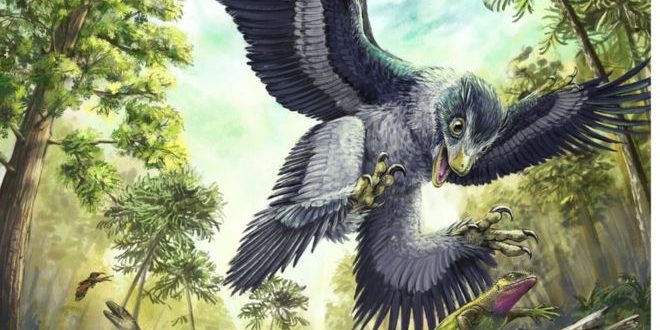Pecking at seeds may have helped ancestors of modern birds survive the cataclysm that wiped out the dinosaurs, scientists believe.
Most bird-like dinosaur species — like their larger relatives — died off during the extinction event that occurred roughly 66 million years ago. Several early bird species, however, survived. Why did these close relatives of feathered dinosaurs outlast their predecessors?
To answer that question, scientists first needed to understand the decline of maniraptoran dinosaurs at the end of the Cretaceous period.
The bird fossil record at the end of the Cretaceous is very incomplete, so the ecologies of species that survived the mass extinction are still largely unknown. With little direct evidence of fossil species surviving the extinction, the reasons as to why some species were able to survive the extinction while their closest relatives went extinct have been unclear. For indirect evidence, the researchers relied on the rich fossil record of isolated small teeth in western North America.
“We’ve used the teeth of these bird-like dinosaurs, similar to Velociraptor, to show that these dinosaurs were a consistent and stable part of the ecosystem leading up to the end of the Cretaceous,” explained lead author of the study Derek Larson, PhD candidate at the University of Toronto and recently appointed assistant curator at the Philip J. Currie Dinosaur Museum. But that consistency ended at the end of the Cretaceous, when 75% of life on the planet went extinct, including most bird-like dinosaurs.”By analyzing the known diets of modern birds, we see many groups that probably survived the extinction likely ate seeds, probably one of the few plentiful resources that were available in the climatic upheaval in the aftermath of the asteroid impact. Those dinosaurs without a beak and without the right teeth to access those resources, would have been relegated to extinction.”
“Skeletons of these small dinosaurs are rare, so isolated teeth represent one of the few consistent sources of data to address this question. We analysed more than 3,000 of these teeth to give the highest resolution picture of their changing shape and diets,” explained the Royal Tyrrell Museum of Palaeontology’s Caleb Brown, co-author of the study. Preserved bird and bird-like dinosaur teeth examined in this study were likely suited to eat a variety of animal remains, but not seeds.
Other paleontologists have concluded that birds’ small body size, large brain size, and even the shape of their eggs allowed them to survive changing conditions after the asteroid. But the new study is the first to examine the contribution of granivory.
Agencies/Canadajournal
 Canada Journal – News of the World Articles and videos to bring you the biggest Canadian news stories from across the country every day
Canada Journal – News of the World Articles and videos to bring you the biggest Canadian news stories from across the country every day



